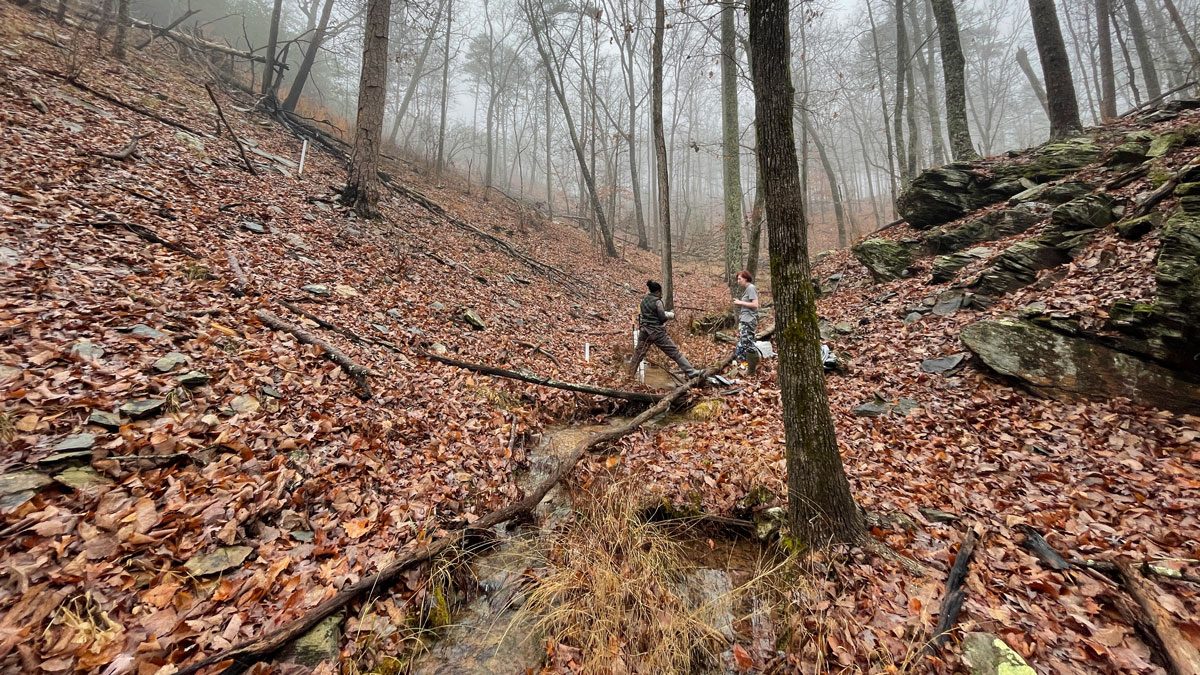Source: Journal of Geophysical Research: Biogeosciences
At the uppermost reaches of stream networks, headwaters dry up during the summer, then burst back into existence when spring brings rain. These nonperennial headwater streams are individually small, but collectively, they make up most of the length of global stream networks, and their chemistry is consequential for downstream waters.
As Earth warms, headwater streams are spending more time dried up and less time running. Zarek et al. investigated how increased dry time affects the nitrogen dynamics of streams throughout a watershed. To do so, they installed 21 sensors throughout a stream network in Alabama’s Talladega National Forest to collect information about stream drying and nitrogen content over the course of a year. They complemented these frequent measurements, taken every 15 minutes, with manual measurements taken during six campaigns across seven sites in the watershed.
The researchers expected that increased streamflow during springtime would wash nutrients downstream and raise nitrogen levels at the outlet of the stream network. Instead, they observed the opposite: When headwater streams increased streamflow, nitrogen concentrations at the outlet decreased. That could be because stream biota, such as riparian plants, in need of nutrients took up more nitrogen, keeping it from running downstream. Aquifer recharging in the spring, as a result of stream rewetting, may also spur chemical reactions that remove nitrogen and prevent its transport downstream.
The researchers also found that both nitrogen concentrations in the watershed and nitrogen removal rates were highest during the period when headwater streams were drying, findings they noted were “surprising.” They hypothesize that the high nitrogen concentrations could be because low streamflow creates ideal conditions for microbial activity that raises the nitrogen content of the water. The same conditions, they suggest, could also be ideal for allowing other microbes to remove nitrogen.
Position within the stream network was not a strong predictor of nitrogen concentrations, the researchers found. That observation suggests that many qualities of streams influence nitrogen dynamics and lead to heterogeneous nitrogen concentrations throughout the system. Their results highlight the need for additional spatially distributed stream monitoring, the researchers write. (Journal of Geophysical Research: Biogeosciences, https://doi.org/10.1029/2024JG008522, 2025)
—Saima May Sidik (@saimamay.bsky.social), Science Writer


